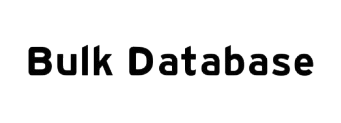Squared Upoffers administrators the option of reading information from various sources and displaying it centrally in dashboards for monitoring. In addition to local servers and information from PowerShell , SquaredUp can also read information from Azure. Databases and various application systems can also be connected. Basically, SquaredUp is able to collect a lot of information from IT, prepare it and display it with modern dashboards.
Most IT tools and server solutions offer some kind of overview and graphical presentation. However, there are only a few tools that can collect and make all information available centrally. But only by merging data can those responsible in the company get a central overview of all connected products. If this data collection is optimally prepared graphically and made available on a central system, comprehensive insights can even be gained at a glance.
Community Dashboard Server is available free of charge
The Community Dashboard Serveris available for this purpose free of charge after registering with the provider. By registering, admins also receive the product key for activating SquaredUp Community Dashboard Server.
The installation can be carried out on local servers. In most cases, the server must be restarted after installation. After installation, the server can be deployed Estonia Phone Number List via the start menu. As part of the deployment, the web server is also configured on the basis of IIS in Windows for setting up the dashboards. It is a good idea to use SSL encryption when installing the server.
An existing certificate on the server can be used for this. Or, a self-signed certificate is created during installation. For testing purposes, however, it is also no problem to work without SSL. Use “Deploy” to deploy the system and after a short time, the SquaredUp web interface can be opened. The URL for access is: A local admin account on the server is required for access.
Connecting data sources to Dashboard Server
After starting the interface, the next step is to connect the data sources that are necessary for access in order to display information. The “Next Steps” menu item is available for this in the web interface. With “Configure data sources” you can select from various data Cell Phone Number Database sources where the dashboard server should get its information from. In addition to generic APIs, Azure AD , SQL and Web APIs are also available here.
Numerous packages are available via the menu items in the upper area, for example “Community Packs”. Here it is possible to read information from numerous sources. These include, for example, VMware environments, Kubernetes clusters, Azure VMs or Salesforce, Azure DevOps as well as Microsoft Teams and many other sources. Many dashboards also allow you to adjust the time horizon. In the upper area of the window it is therefore possible to adjust the time frame. Based on the selected time frame, the data in the individual tiles of all compatible sources also changes.
Customize dashboards and export to Excel
On the SquaredUp administration website, you can use the gear icon in the top right to make adjustments to the dashboards. Additional elements can be added here, for example. It is also possible to integrate information from different sources into a dashboard. This Bulk Database significantly improves the overview when numerous data sources are connected to the system. SquaredUp makes the new tile available using the “publish” button.
With the “Export dashboard to Excel” button, SquaredUp creates an Excel file in which all the important information from the dashboard can be seen. This also makes it possible to export all the important information at once. In addition to these options, administrators can add more dashboards and tiles to the environment at any time using the menu and the plus sign at the top. It is also possible to add new folders to control dashboards and tiles in the web interface.


